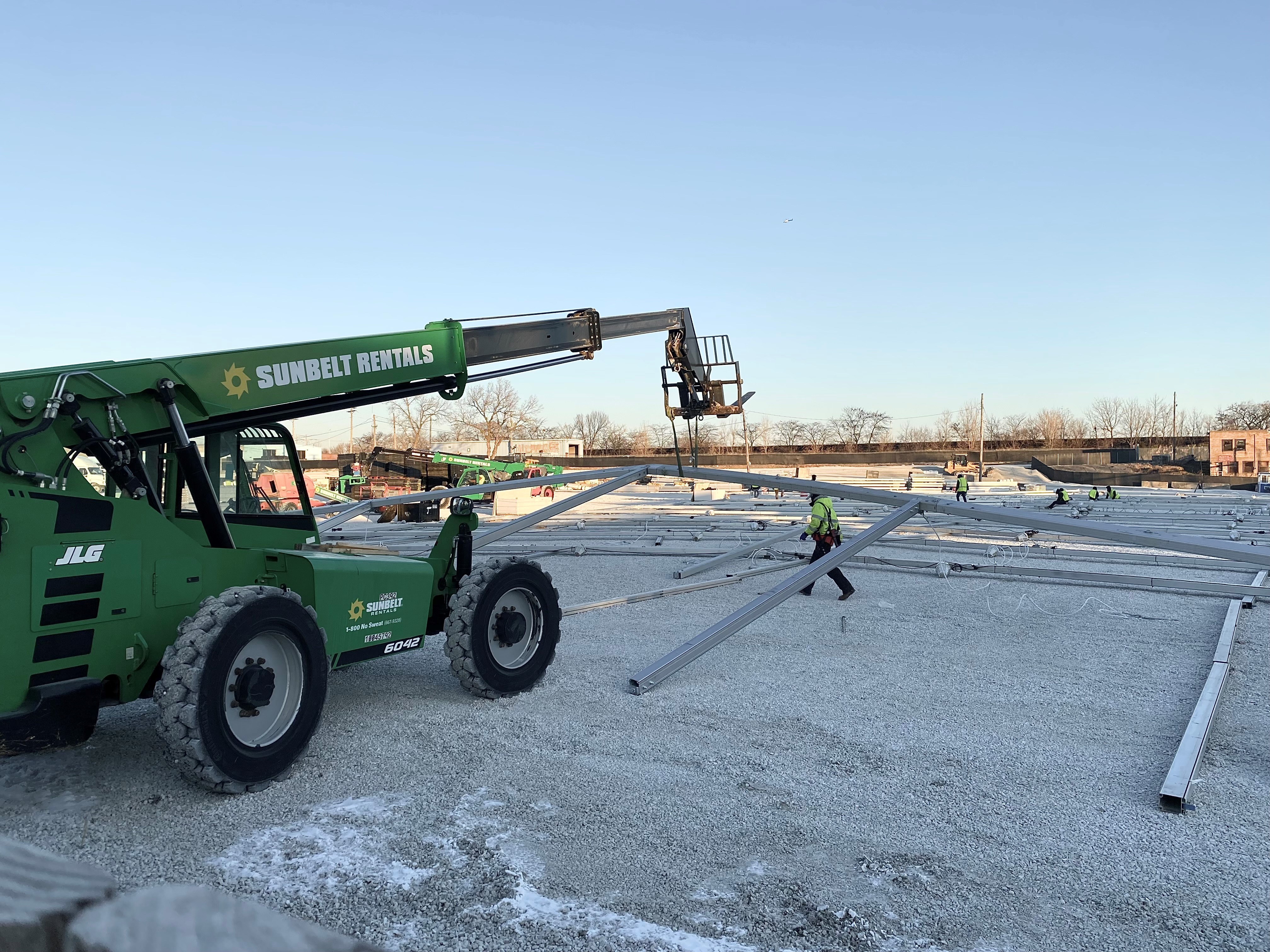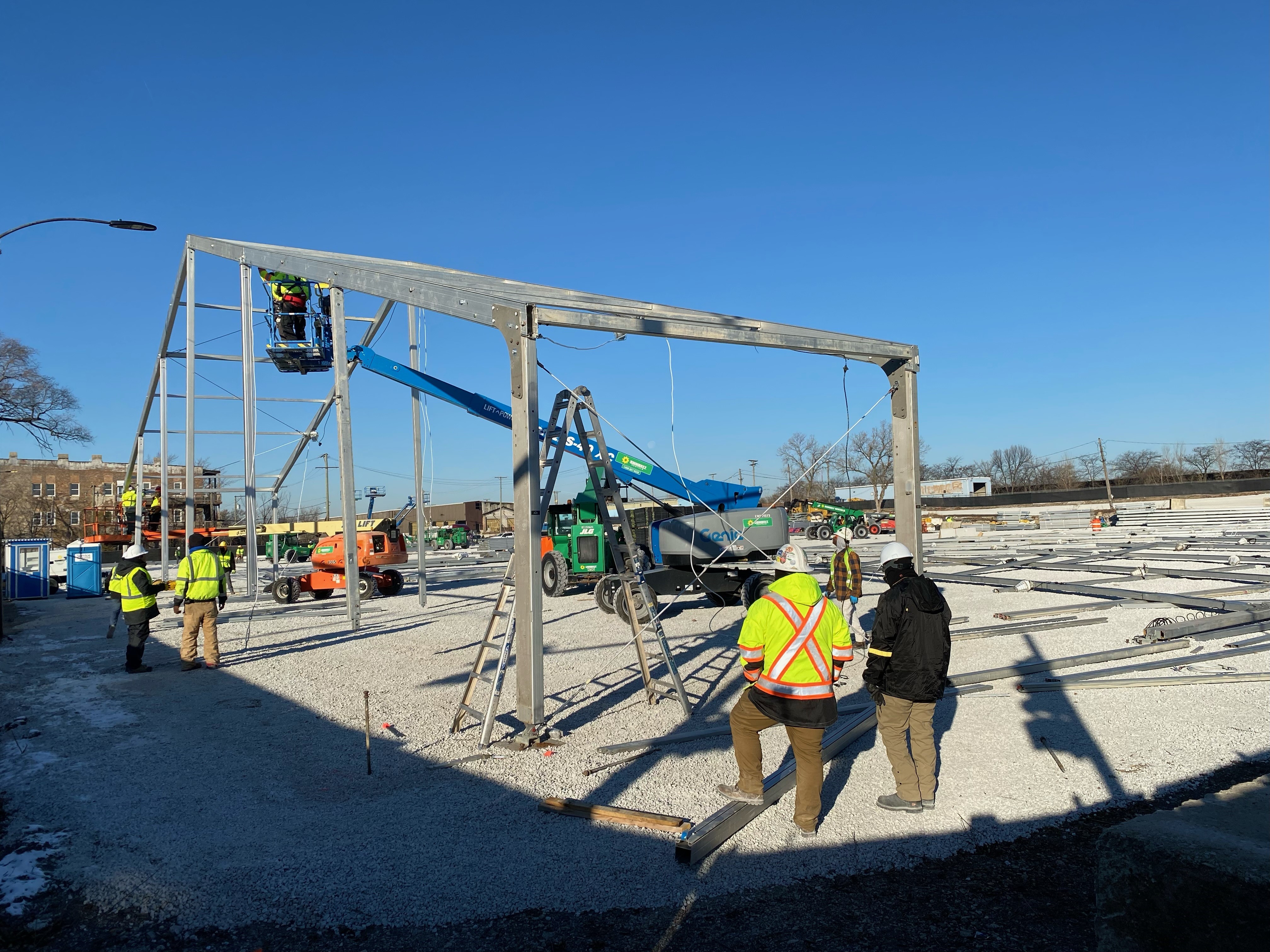Chicago Mayor Brandon Johnson responded Tuesday after the state halted plans to build a migrant base camp at a site in the city's Brighton Park neighborhood citing "environmental concerns."
The mayor said despite the setback, his "mission is still very much alive."
"I've said from the very beginning, especially as winter is approaching and weather is shifting, is to get people out of police stations — women, children sleeping on the floors, those who are sleeping outside — to remove people from police districts. And we've we've been doing that work," he said.
The decision comes just after Illinois Gov. J.B. Pritzker's administration temporarily halted construction at the site, located at 38th and California, to further review an 800-page environmental assessment, which revealed levels of mercury and other contaminants in the soil that exceeded environmental limits.
“My administration is committed to keeping asylum seekers safe as we work to help them achieve independence,” Pritzker said in a statement. “We will not proceed with housing families on a site where serious environmental concerns are still present. My administration remains committed to a data-driven plan to improve the asylum seeker response and we will continue to coordinate with the City of Chicago as we work to expand available shelter through winter.”
According to the state, the Illinois Environmental Protection Agency cited "concerns related to insufficient soil sampling and remediation."
Johnson said "discovering toxicity [at the site] wasn't a surprise], but said "the contract that the state of Illinois went into with Gardaworld, as they continued to build out on this site, there was no indication throughout this entire process, that a standard or a different methodology was preferable by the state of Illinois."
"There was no additional information that was provided that would have led us to believe that this particular report that has been validated to be safe by third parties, that somehow that operation will be halted," Johnson said.
Instead, the state will expedite previous efforts to launch a brick-and-mortar shelter in the Little Village neighborhood, which will have 200 beds available. The state also requested a list of alternate sites from Chicago and will work with the Archdiocese of Chicago to explore more options for brick-and-mortar sites.
“IEPA would not approve the proposed Brighton Park site for residential use, based on our regulatory standards for remediation of contaminated properties,” Illinois EPA Director John J. Kim said in a statement. “The well-being of residents and workers at the site is our highest priority, and current and planned site conditions do not adequately reduce risks of human exposure to known and potential environmental conditions.”
Feeling out of the loop? We'll catch you up on the Chicago news you need to know. Sign up for the weekly Chicago Catch-Up newsletter.
The Brighton Park base camp location was designed to temporarily house up to 2,000 migrants. The city wanted them removed from sleeping in airports or outside Chicago police stations as winter arrives.
Johnson acknowledged alternate locations are being explored, but did not specify which could be a likely backup.
"I've been planning for Plan B, C, and D, and E and F, from the very moment that I became the mayor of the city of Chicago. And so whether it's 115th and Halsted, or 38th and California, or any other brick and mortar location that we've identified, that can serve the purpose of this mission, know that my administration is planning ahead," he said.
The 800-page environmental report, compiled by the city’s contractor, Terracon Consultants, revealed that levels of mercury, lead, arsenic and other toxic substance were found in the soil. Additional remediation efforts were planned through Dec. 8, the report says. A map included in the report reveals that the mercury was discovered near an area labeled as “Sleep 1” — where one of two large tent-like structures were erected last week.
The contaminated soil was removed and disposed of at the Laraway Landfill and contractors placed six inches of gravel on top to mitigate any exposure the soil.
During an unrelated court hearing Monday involving a lawsuit filed by Brighton Park residents who oppose to the site’s use, an attorney for the City of Chicago said the site is now “cleaner” than it was when the city signed a land use agreement and identified its potential use.
There are questions about how soon the city knew contaminates existed, however.
NBC 5 investigates captured video Tuesday of trucks hauling in gravel and pavers smoothing it out.
And the report itself notes the city’s contractor showed up on Nov. 14 to further explore and collect more samples where mercury had been detected.
They returned again on Nov. 21 to sample the air, with additional samples being collected through Dec. 1.
Johnson declined to answer questions about the contaminates when NBC 5 Investigates asked him last Tuesday.
“The assessment is ongoing, the full report will be provided by the end of the week,” he said.



